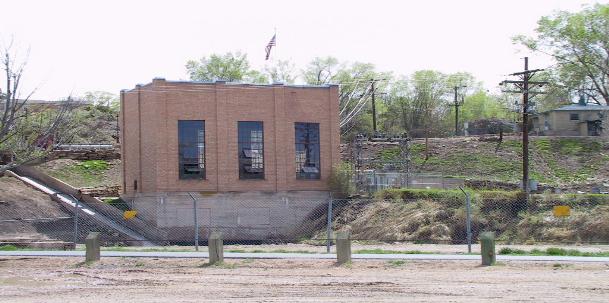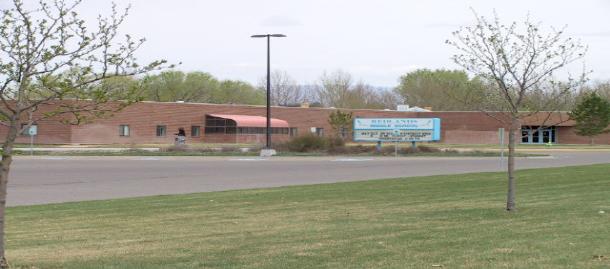Chapter 34.12
GENERAL SERVICES ACTION PLAN
Sections:
34.12.020 Goals, policies, implementation.
34.12.010 Findings.
(a) General. Utility services in the area are provided as follows:
(1) Domestic Water – Ute Water Conservancy District, Bruners Water System.
(2) Electricity – Excel Energy and Grand Valley Power.
(3) Irrigation – Redlands Water and Power Company.
(4) Sewage Collection – City of Grand Junction/Mesa County Joint Sewer System (Persigo).
(5) Sewage Treatment – City/County Persigo Wastewater Treatment Plant.
(6) Solid Waste Collection – Several private haulers in addition to the City of Grand Junction.
(b) Domestic Water. Service provided by Ute Water has been interrupted several times in the recent past due to line breaks. Many existing waterlines do not meet current fire protection standards, particularly in terms of line size and looping requirements. There are issues with varying water pressure day to day. The various providers in the valley have adopted common water system construction standards.
Bruners Water System (Artesian Water Services), a private water provider, serves over 200 homes on the Redlands. These residences at some point may need to be integrated into the Ute Water system. Estimated costs of $1,200,000 are needed to upgrade the existing water line infrastructure before Ute Water could serve these residences.
There are also several residences on wells. Over time, these residences may want or need to connect to Ute Water’s facilities.
(c) Irrigation/Drainage. Irrigation water is supplied to a majority of the Redlands via the Redlands Water and Power District. Irrigation water comes from a dam on the Gunnison River that diverts water for irrigation and the power plant. The Ridges/Redlands Mesa takes their water out after it passes through the power plant.
Redlands Water and Power is not responsible for handling drainage in the area. Mesa County has already compiled drainage information from the various private development studies that have been completed to date.
Drainage is a very high concern on the Redlands due to the large amount of steep, impervious land to the southwest of the Redlands within the Colorado National Monument. Runoff from most storm events starts southwest of the area and moves northeasterly, essentially “following” the drainages to the Colorado River. Because of the above factors, all of the washes and streams are subject to flash flooding and should be very closely analyzed when developing new drainage plans or siting structures.

Redlands Power Canal and Power Stations
(d) Sewer. The Redlands area within the Grand Junction sewer service area is or will be served by sanitary sewer. Within the City of Fruita’s sewer service area, much of the area is slated to be removed from the service area. The 2001 City of Fruita Community Plan 2020 recommends removing most of the Redlands area east of Kings View Estates from the Fruita 201 Sewer Service Area and utilizing individual sewage disposal systems.
Much of the existing housing in the Grand Junction Persigo 201 Sewer Service Area is not currently being served by sanitary sewer. It is estimated that 1,400 homes in the Redlands are served by on-site sewage disposal systems. Although septic tank and soil treatment of domestic wastewater is an effective and proven means of sewage treatment, the age of many systems in the area and the lack of adequate installation area for replacement fields have begun to produce complex and expensive repairs of existing systems. The proliferation of small parcels and the resulting high density has made many areas in the Redlands impractical for on-site wastewater disposal. The City of Grand Junction and Mesa County have recommended that new development within the urban boundary be constructed with provisions for sewer service.
The Septic System Elimination Program has been established to convert neighborhoods from individual septic systems to a public system where raw sewage will be treated at the Persigo Wastewater Treatment Plant. Under the program, the City/County sewer fund subsidizes the cost of constructing sewer infrastructure to the property lines by 30 percent. The subsidy is intended to bring the cost of sewer service down to approximately the same amount as replacement of a septic system.
Several neighborhood sewer improvement districts have been formed to provide sanitary sewer service and eliminate individual septic systems. The following list of neighborhood areas are completed, under construction, or are being planned:
(1) Monument Meadows (12 homes/completed 2001);
(2) Columbine Area (66 homes/completed 2001);
(3) Manzana (eight homes/completed 2001);
(4) Country Club Park No. 2/Mesa Vista (66 homes/2002 completion);
(5) Redlands Village South (118 homes/2002 completion);
(6) West Scenic Area (13 homes/under design);
(7) Skyway (231 homes/under design);
(8) Redlands Village North (205 homes/2002 construction);
(9) 23 Road and Broadway Area (31 homes/under design).
(e) Solid Waste Collection/Trash Pick-Up. There are several private haulers, in addition to the City of Grand Junction, that provide solid waste collection to the Redlands area. City ordinance requires residences within the City of Grand Junction to have their trash picked up by either the City or a private hauler.
With multiple private haulers, there are issues with noise, aesthetics and number of large trucks driving on neighborhood streets throughout the workweek. Consolidating services for individual neighborhoods would reduce the frequency of noisy refuse trucks, reduce the number of days that refuse containers are placed at the curb, and reduce the number of large trucks using the neighborhood streets.
(f) Public Safety (Law Enforcement and Fire). Public safety services within the planning area include the following:
(1) Fire protection is provided by Grand Junction City/Rural Fire Districts Station No. 1 at Sixth Street and Pitkin Avenue. Many concerns have been expressed during this planning process as well as previous discussion at the City and County regarding the need for better fire protection in the Redlands area, including a new fire station. For wildfires, please see Chapter 34.20 GJMC, Land Use/Growth Management Action Plan.
(2) Emergency medical service is provided by the Grand Junction Fire Department and area ambulance services. As part of a new fire station, an emergency response facility may be constructed first. Currently nine out of 10 emergency calls on the Redlands are for medical needs only.
(3) Law enforcement is provided by the Mesa County Sheriff’s Office, the Grand Junction Police Department and the Colorado State Highway Patrol. There are several active neighborhood watch programs throughout the Redlands area. The City Police Department and County Sheriff review development proposals for elements of crime prevention through design, e.g., limited access to properties [cul-de-sacs, and minimizing opportunities for criminals to hide (landscaping)]. Multiple access points to developments are often encouraged by the fire departments to ensure emergency vehicle access in case an access is blocked.
(g) Schools. There are three elementary schools and one middle school located on the Redlands. Statistics show that the actual growth in the number of students attending School District 51 schools located on the Redlands has remained steady at around 1,600 students for K – 8 during the past four years.

Redlands Middle School
School District 51’s Long-Range Planning Committee has made recommendations to the School Board that in the short term, through 2010, the need for new schools within the District does not include any new schools in the Redlands (including a high school). In looking at the need for a new high school in the Redlands, the majority of current high school students living in the Redlands attend Fruita Monument High School in Fruita with a small number of students attending Grand Junction High School. Redlands Middle School, which feeds into these two high schools, has not increased in enrollment over the past four years. With little or no high school student growth coming from the Redlands area, the need for a new high school on the Redlands is not justified. Even though the number of new homes continues to increase in the Redlands, the demographics of those homes is changing. This trend shows the population is changing, with households having fewer or no school-aged children (Table 1).
|
School Enrollment October of each year |
||||
|
1998 |
1999 |
2000 |
2001 |
|
|
ELEMENTARY SCHOOLS |
||||
|
Broadway |
302 |
287 |
284 |
289 |
|
Scenic |
235 |
230 |
240 |
261 |
|
Wingate |
471 |
493 |
458 |
446 |
|
SECONDARY SCHOOLS |
||||
|
Redlands Middle |
598 |
593 |
599 |
598 |
Source: Mesa County School District 51.
(Res. 62-02, 6-26-02)
34.12.020 Goals, policies, implementation.
(a) Goals.
(1) To make available at an urban level all utility, solid waste, drainage and emergency response services to all properties located within the urban boundaries on the Redlands.
(2) To provide a rural level of services to properties outside of urban areas.
(3) To promote the cost-effective provision of services for businesses and residents by all service providers.
(b) Policies.
(1) Coordinate between public and private service providers to develop and maintain public improvements which efficiently serve existing and new development.
(2) Provide an urban level of services, all utility, solid waste, drainage and emergency response services to all properties located within the urban boundaries on the Redlands and a rural level of services to properties outside of urban areas.
(3) Design and construct water and sanitary sewer systems with adequate capacity to serve future populations.
(4) Encourage service providers to participate in joint service ventures that reduce service costs while maintaining adequate levels of service.
(5) Encourage consolidations of services whenever such consolidations will result in improved service efficiencies while maintaining adopted level of service standards.
(6) Encourage the use of nonpotable water for irrigation.
(c) Implementation.
(1) The City and County shall coordinate with public and private service providers to develop and maintain public improvements which efficiently serve existing and new development.
(2) The City and County shall maintain and annually update 10-year capital improvements plans that identify specific improvements required to serve existing and approved development.
(3) The City and County shall limit urban development1 outside of the urban growth boundary.
(4) The City and County shall ensure that water and sanitary sewer systems are designed and constructed with adequate capacity to serve proposed development.
(5) The City and County shall coordinate with other service providers to identify opportunities for improving operating efficiencies. The City and County will encourage service providers to participate in joint service ventures that reduce service costs while maintaining adequate levels of service.
(6) The City and County shall encourage consolidation of services whenever such consolidation will result in improved service efficiencies while maintaining adopted level of service standards.
(7) The City and County shall encourage the use of nonpotable water for irrigation, particularly for recreation areas, common areas and other public spaces.
(Res. 62-02, 6-26-02)
Urban development includes all projects of a sufficient intensity to require connection to an organized wastewater collection and treatment system or other urban services. Urban development includes residential development on lots smaller than two acres, and nonresidential development other than agricultural, mining or approved home occupations.


